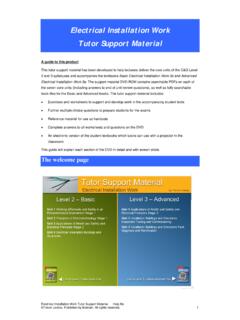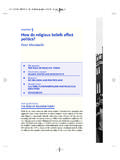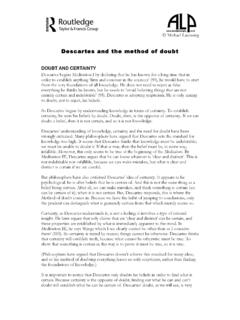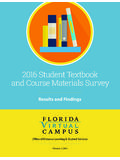Transcription of Main issues of translation studies - Routledge
1 CHAPTER 1 main issues of translation studies Key texts Holmes, James S. (1988b/2004) The name and nature of translation studies , in Lawrence Venuti (ed.) (2004), The translation studies Reader , 2nd edition, pp. 180 92. Jakobson, Roman (1959/2004) On linguistic aspects of translation , in Lawrence Venuti (ed.) (2004), The translation studies Reader , 2nd edition, pp. 138 43. Snell-Hornby, Mary (2006) The Turns of translation studies , Amsterdam and Philadelphia: John Benjamins, Chapter 1 . van Doorslaer, Luc (2007) Risking conceptual maps , in Yves Gambier and Luc van Doorslaer (eds) The Metalanguage of translation , special issue of Target : 217 33. Key concepts Definitions of translating and interpreting.
2 The practice of translating is long established, but the discipline of translation studies is new. In academic circles, translation was previously relegated to just a language-learning activity. A split has persisted between translation practice and theory. The study of (usually literary) translation began through comparative literature, translation workshops and contrastive analysis. James S. Holmes s The name and nature of translation studies is considered to be the founding statement of a new discipline. translation studies has expanded hugely, and is now often considered an interdiscipline. Copyright Taylor & translation STUDIES8 The concept of translation The main aim of this book is to introduce the reader to major concepts and models of translation studies .
3 Because the research being undertaken in this field is now so extensive, the material selected is necessarily representative and illustrative of the major trends. For reasons of space and consistency of approach, the focus is on written translation rather than oral translation (the latter is commonly known as interpreting or interpretation ), although the overlaps make a clear distinction impossible (cf. Gile 2004). 1 The English term translation , first attested in around 1340, 2 derives either from Old French translation or more directly from the Latin translatio ( trans-porting ), itself coming from the participle of the verb transferre ( to carry over ). In the field of languages, translation today has several meanings: (1) the general subject field or phenomenon ( I studied translation at university ) (2) the product that is, the text that has been translated ( they published the Arabic translation of the report ) (3) the process of producing the translation , otherwise known as translating ( translation service ).
4 The process of translation between two different written languages involves the changing of an original written text (the source text or ST ) in the original verbal language (the source language or SL ) into a written text (the target text or TT ) in a different verbal language (the target language or TL ): Source text (ST) Target text (TT) in source language (SL) in target language (TL) Thus, when translating a product manual from Chinese into English, the ST is Chinese and the TT is English. This type corresponds to interlingual translation and is one of the three categories of translation described by the Russo-American structuralist Roman Jakobson (1896 1982) in his seminal paper On linguistic aspects of translation .
5 Jakobson s categories are as follows: (1) intralingual translation , or rewording an interpretation of verbal signs by means of other signs of the same language Copyright Taylor & issues 9 (2) interlingual translation , or translation proper an interpretation of verbal signs by means of some other language (3) intersemiotic translation , or transmutation an interpretation of verbal signs by means of signs of non-verbal sign systems . (Jakobson 1959/2004: 139) These definitions draw on semiotics , the general science of communication through signs and sign systems, of which language is but one (Cobley 2001, Malmkj r 2011). Its use is significant here because translation is not always limited to verbal languages.
6 Intersemiotic translation , for example, occurs when a written text is translated into a different mode, such as music, film or painting. Examples would be Jeff Wayne s famous 1978 musical version of H. G. Wells s science-fiction novel The War of the Worlds (1898), which was then adapted for the stage in 2006, or Gurinder Chadha s 2004 Bollywood Bride and Prejudice adaptation of Jane Austen s Pride and Prejudice . Intralingual translation would occur when we produce a summary or otherwise rewrite a text in the same language, say a children s version of an encyclopedia. It also occurs when we rephrase an expression in the same language. In the following example, revenue nearly tripled is a kind of intralingual translation of the first part of the sentence, a fact that is highlighted by the trigger expression in other words.
7 In the decade before 1989 revenue averaged around [NZ]$1 billion a year while in the decade after it averaged nearly [NZ]$3 billion a year in other words, revenue nearly tripled. 3 It is interlingual translation , between two different verbal sign systems, that has been the traditional focus of translation studies . However, as we shall see as the book progresses, notably in Chapters 8 to 10 , the very notion of translation proper and of the stability of source and target has been challenged. The question of what we mean by translation , and how it differs from adaptation , version , transcreation (the creative adaptation of video games and advertising in parti-cular, see section ), localization (the linguistic and cultural adaptation of a text for a new locale, see section ) and so on, is a very real one.
8 Sandra Halverson (1999) claims that translation can be better considered as a prototype classification, that is, that there are basic core features that we associate with a prototypical translation , and other translational forms which lie on the periphery. Much of translation theory has also been written from a western perspective and initially derived from the study of Classical Greek and Latin and from Biblical Copyright Taylor & translation STUDIES10practice (see Chapter 2 ). By contrast, Maria Tymoczko (2005, 2006, 2007: 68 77) discusses the very different words and metaphors for translation in other cultures, indicative of a conceptual orientation where the goal of close lexical fidelity to an original may not therefore be shared, certainly in the practice of translation of sacred and literary texts.
9 For instance, in India there is the Bengali rupantar (= change of form ) and the Hindi anuvad (= speaking after , following ), in the Arab world tarjama (= biography ) and in China fan yi (= turning over ). Each of these construes the process of translation differently and anticipates that the target text will show a substantial change of form compared to the source. 4 What is translation studies ? Throughout history, written and spoken translations have played a crucial role in interhuman communication, not least in providing access to important texts for scholarship and religious purposes. As world trade has grown, so has the impor-tance of translation . By 2008, in the European Union alone the turnover of the translation and interpreting industry was estimated at billion euros.
10 5 Yet the study of translation as an academic subject only really began in the second half of the twentieth century. In the English-speaking world, this discipline is now gener-ally known as translation studies , thanks to the Dutch-based US scholar James S. Holmes (1924 1986). In his key defining paper delivered in 1972, but not widely available until 1988, Holmes describes the then nascent discipline as being concerned with the complex of problems clustered round the phenomenon of translating and translations (Holmes 1988b/2004: 181). By 1995, the time of the second, revised, edition of her translation studies : An Integrated Approach , Mary Snell-Hornby was able to talk in the preface of the breathtaking develop-ment of translation studies as an independent discipline and the prolific interna-tional discussion on the subject (Snell-Hornby 1995, preface).












